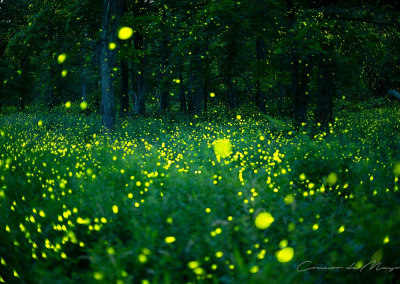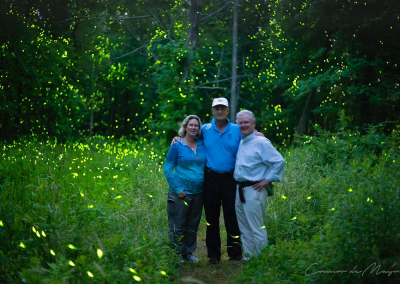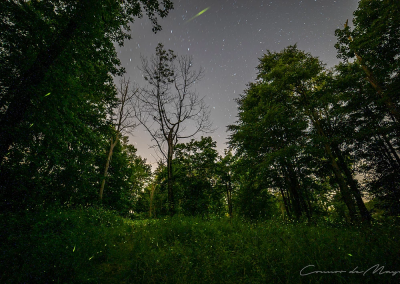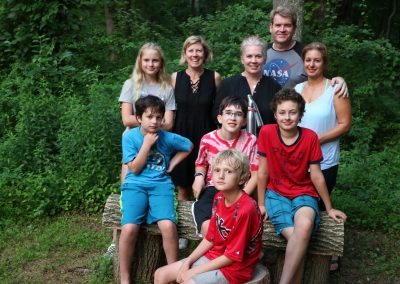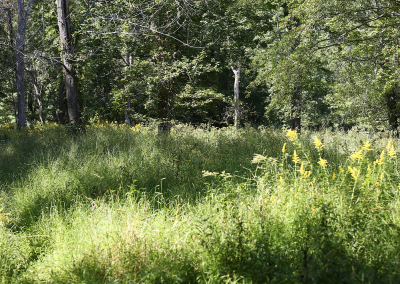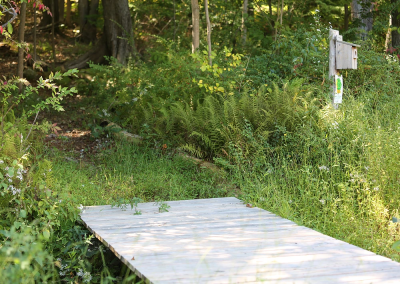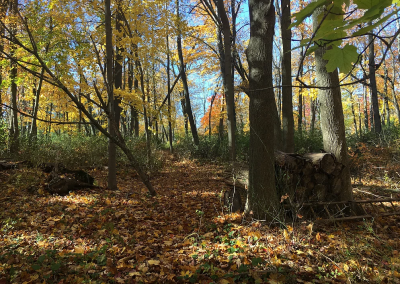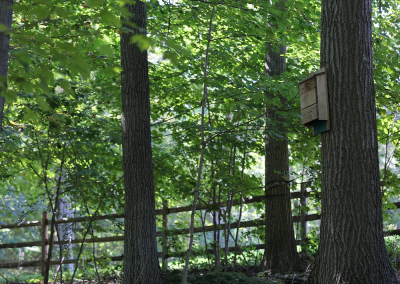Marvin, Massarella, & Friends Firefly Sanctuary
Location: Northern New Canaan, just north of the intersection of Sleepy Hollow Road and Laurel Road.
Access: Visitors should park across the street from 33 Sleepy Hollow Road, and access the property via a small footbridge on the west side of the road.
Date Protected: 1983 and 2015 Acreage: 6.5 Trail Length: 0.3 miles
Firefly Viewing Season: Late June through early July Dogs Allowed? Yes, on leash
Visitation Hours: Dawn to Dusk, except during the firefly viewing season, when visitors are welcome to stay through the evening. During the peak of the 2023 viewing season (June 25 – July 9), advanced registration will be required. Registration for the 2023 Firefly Viewing Season will be available soon.
History: The Land Trust’s Firefly Sanctuary is likely the first dedicated firefly preserve in the United States. Its protection came in two phases, with the first 2.5-acres gifted by David and Marion Marvin in 1983. Thirty-two years later, in 2015, the Land Trust was given the opportunity to acquire an adjoining 4 acres of forest and meadow from Anthony and Marie Massarella at a reduced price. Thanks to the generosity of Massarellas and some of the immediate neighbors, NCLT raised the funds needed to protect this parcel, and triple the acreage of the preserve.
Recreation Opportunities: NCLT has established, and continues to maintain a walking trail at the Firefly Sanctuary. The short trail enables visitors to park along Sleepy Hollow Road, and make their way to the “Firefly Field” on the western portion of the property. The property is also a fine site for bird watching, or taking a quick walk with your dog.
Firefly Viewing: During late June and early July, this field is illuminated by thousands upon thousands of fireflies. The fireflies emerge at dusk, and continue their show well into the night. We recommend starting your walk up to the preserve at 8:30pm, while there is still daylight to help you navigate the trail. Once you reach the Firefly Field, the “show” will have just started, and will continue to improve as the sky darkens. This is a phenomenon that inspires wonderment and awe by all who witness it. NOTE: During the peak of the firefly viewing season (late June and early July), NCLT requires advanced registration to visit the preserve and see the fireflies. More information is available in our events calendar.
Listen to our podcast. New Canaan Land Trust Presents the Wondrous World of Fireflies.
A conversation with Dr. Sara Lewis.
New Canaan Land Trust’s Executive Director Aaron Lefland interviews renowned scientist and professor Dr. Sara Lewis about fireflies. Dr. Lewis, who has studied fireflies for nearly three decades, offers insights into the luminous lives and behaviors of fireflies.
Firefly Viewing Etiquette:
-
- Limiting Light Pollution: Fireflies communicate using light, so any artificial light can confuse and disorient the fireflies during their critical mating period. As such, we ask that visitors minimize their use of lights while at the sanctuary. By arriving at 8:30, visitors will be able to make it up to the viewing area without the need for a flashlight. While viewing fireflies, please limit phone use. Should you want to take pictures, please dim your screen to the lowest possible setting and turn your flash off. On your way back to your car, cover your flashlight as much as possible and keep it pointed at the ground.
- Using Insect Repellent Responsibly: Fireflies are also affected by insect repellent, so we ask that visitors apply bug spray while at the parking area. No insect repellents may be applied at the viewing area. We encourage the use of natural insect repellents, and also encourage visitors to wear long-sleeve shirts, long pants, and hats to deter insects.
- Minimizing Impacts: Staying on marked trails and sitting in the established seating areas both help to minimize our cumulative impact on the sanctuary and its residents. Fireflies that have not yet reached their adult form live on the ground, and can be easily trampled and crushed by humans walking through.
Land Stewardship: In addition to trail maintenance projects, NCLT works to ensure that the property is ideally suited for the enormous firefly population that calls the sanctuary “home”. Limited mowing creates the grassy/brushy habitat that fireflies need, while preventing woody plants from taking over. We deliberately leave woody material on the ground to serve as nesting sites for the fireflies. This downed materials also serves as a home for the worms and snails that firefly larvae eat.
More: Read on about our “one of a kind” firefly sanctuary in THIS article by Dr. Christopher Cratsley, a biologist and entomologist at Fitchburg State University.
